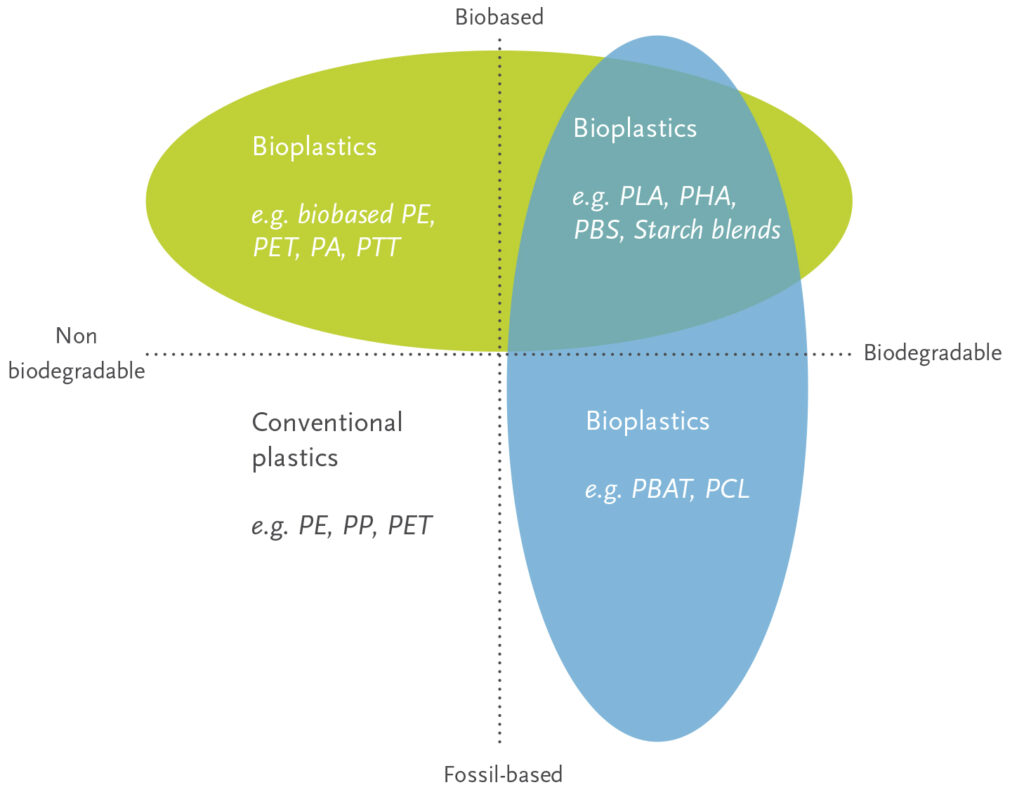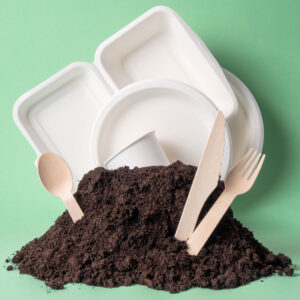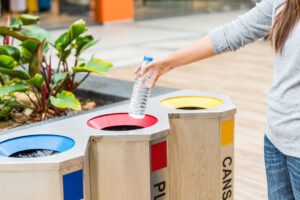What are common types of bioplastics?
Basically, there are three categories of bioplastics: biobased, biodegradable, or both.
Biobased, traditional resins, like bio-PET and bio-PE (also PA, PP, PTT and others), are identical to their conventional petroleum-based plastic counterparts – with the exception that they are made in whole or in part from biobased inputs – and can be recycled in existing recycling systems.
Biobased, biodegradable resins such as PLA, PHA, and starch blends offer innovative solutions to our plastics problem because they can be biodegradable and/or compostable. Compostable bioplastics present opportunities for less food and plastic waste to landfills, reduced landfill methane emissions, and for producing a valuable soil amendment.
Biodegradable bioplastics including PBAT and PCL are made from fossil-based inputs. These types of bioplastics may also be compostable.
The three categories of bioplastics are identified in the chart below from European Bioplastics e.V. (EUBP).

How is biobased plastic made?

Biobased plastics can be made by converting the sugars present in plants or other renewable agricultural inputs into plastic via fermentation, heat or chemical reaction. Essentially, renewable biomass is broken down into chemical building blocks, which are then converted into polymers that are used to make biobased plastics.
Biobased plastics can be processed with most conventional plastic manufacturing techniques, including extrusion, injection molding, blow molding and compression molding. They can be blown into films, spun into fibers for textiles, or processed into a variety of other forms for many different applications
What are the consumer trends in biobased plastics?
The market for bioplastics, including biobased plastics, continues to grow. Consumers care about sustainability and want to support businesses producing and manufacturing sustainable products that contribute to the circular economy, improving the world for future generations. Research from PBPC supports this idea, demonstrating that massive consumer interest exists for more products made from biobased plastic. Find out more at https://pbpc.com/consumer-trends/.
Globally, European Bioplastics reports that the production of bioplastics is expected to more than triple from 2021 to 2026, from 2.4 million metric tons to 7.5 million metric tons.
What are some common applications of bioplastics?
Bioplastics are used in an increasing number of applications from packaging to rocket parts. Packaging is the most common application of bioplastics including flexible packaging, bags and containers for foods, beverages, personal care products, consumer goods, and industrial goods.

A wide variety of consumer goods are made from bioplastics such as clothing and footwear, furniture, carpets, personal care items, toys, sport equipment, office supplies, and electronic components like circuit boards and phone casings.
Agricultural and horticultural applications include biodegradable mulching films that can be tilled into the soil after use, produce packaging and storage, young tree and plant protectors, seedling and plant trays, floral wrap, and many more.
The types of applications expand as industry innovators continue to develop and enhance functionality. Medical applications for biodegradable bioplastics are on the rise such as dissolvable sutures or screws used to help bones heal. The automotive and aerospace industries continue to find new uses for bioplastics as a way to reduce weight for lower fuel consumption and greenhouse gas emissions.
Do bioplastics offer the same functionality and properties as other alternatives in the marketplace?

Absolutely! And then some. Many bioplastics have properties and functionality that are identical to traditional plastics. Some bioplastics have improved performance properties, such as increased heat resistance, enhanced moisture or gas barriers, and greater stiffness or flexibility. And biodegradable and compostable bioplastics offer unique, beneficial end-of-life opportunities.
Read our blog post on plant-based durable goods to learn more.
Are bioplastics made of 100% plant based materials?
Not all bioplastics are completely plant-based. Some bioplastics, such as PE, PP, PET or PVC, can be made from a combination of biobased and fossil-based inputs. Biobased and fossil-based biodegradable bioplastics may be used in combination to provide a specific functionality needed for an end product. The biobased content of a product can be determined through standard test methods such as ASTM D6866.
Are bioplastics biodegradable?
 Some bioplastics can be composted, some can be recycled, and some can biodegrade. The term “biodegradable” means a product will degrade in a particular ambient environment as a result of the action of naturally occurring microorganisms such as fungi, algae, and bacteria.
Some bioplastics can be composted, some can be recycled, and some can biodegrade. The term “biodegradable” means a product will degrade in a particular ambient environment as a result of the action of naturally occurring microorganisms such as fungi, algae, and bacteria.
“Biodegradable” is different than “compostable.” Compostable products will break down in industrial composting facilities where the right conditions are carefully created and maintained. Learn more about what biodegradable means in our blog post Are all plant-based materials compostable or biodegradable?
Are bioplastics recyclable?
 Some bioplastics are recyclable, but not all. Some bioplastics can be used as a drop-in alternative to conventional plastic to make products that can be reused or recycled with traditional plastic products in current recycling systems.
Some bioplastics are recyclable, but not all. Some bioplastics can be used as a drop-in alternative to conventional plastic to make products that can be reused or recycled with traditional plastic products in current recycling systems.
Learn more about bioplastics and waste systems for a more circular economy in our blog post Should we be moving to more plant-based products before the waste management system is ready for it?
Do bio-based plastics contribute to converting land to agriculture?
The amount of land used to grow bio-based plastic feedstock is miniscule compared to other uses: in 2020, 0.05% of global arable land, or 0.7 million hectares was used to grow feedstocks for bio-based plastics globally, and that’s only estimated to increase to 1.1 million hectares by 2025.
Download a PDF of PBPC’s Bioplastics FAQs
Interested in more FAQs? Check out our plant based products FAQs.
